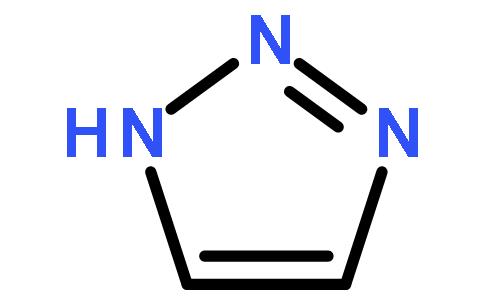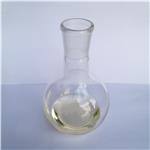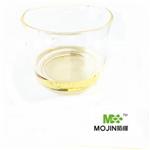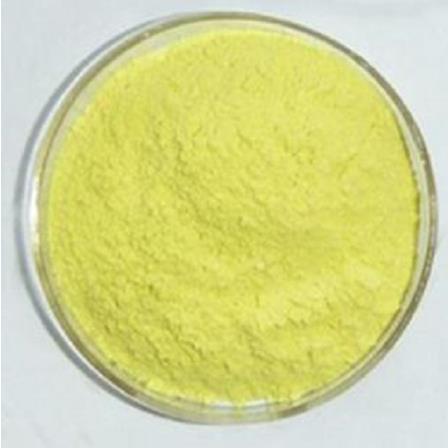The Versatile Wonders of 1,2,3-1H-Triazole
Oct 8,2024
Introduction
In the vast landscape of organic chemistry, 1,2,3-1H-triazole stands out as a remarkable molecule with a myriad of applications spanning industries, agriculture, and medicine. Its unique structure and exceptional reactivity have captivated researchers for decades, leading to a wealth of discoveries and innovations.
1,2,3-1H-Triazole, also commonly referred to as 1H-1,2,3-triazole or simply 1,2,3-triazole, belongs to the family of five-membered heterocyclic compounds containing three nitrogen atoms. Its chemical formula is C2H3N3, with a molecular weight of 69.07 g/mol. Its structure features a triazole ring, where one of the nitrogen atoms (N1) is protonated, making it an aromatic system. This protonation imparts unique properties to the molecule, setting it apart from its 2H- and 4H-isomers.

Synthesis Methods
The synthesis of 1,2,3-1H-triazole has been extensively studied, leading to the development of various efficient methods. The most widely used and versatile route involves the copper(I)-catalyzed Huisgen 1,3-dipolar cycloaddition of azides with terminal alkynes, also known as the "click chemistry" reaction. This method is highly selective and tolerates a broad range of functional groups, making it ideal for the preparation of complex molecules.
Other notable synthesis routes include the base-catalyzed condensation of azides with activated methylene compounds, which is particularly useful for the synthesis of triazoles bearing 5-amino or hydroxy substituents. Thermal cycloaddition of azides to acetylenes is another viable option, offering flexibility in incorporating diverse substituents into the final products.1
Properties and reactivity
1,2,3-1H-Triazole exhibits several properties that contribute to its widespread applications. Its aromatic nature endows it with stability and allows for efficient electron delocalization. Furthermore, the presence of three nitrogen atoms makes it a highly polarizable molecule, enhancing its reactivity towards various nucleophiles and electrophiles.
Ion chemistry studies have shed light on the intricate mechanisms of reactions involving it. For instance, deprotonation at the N1-H site yields the major production, the it ion, which can undergo further reactions. Deprotonation at other positions, such as C4 and C5, initiates fragmentation of the ring structure, leading to the formation of minor products like the ketenimine anion and iminodiazomethyl anion.2
Applications in Industry
Light Stabilizers and Optical Brightening Agents
1,2,3-1H-Triazole and its derivatives have garnered significant interest as light stabilizers and optical brightening agents due to their ability to absorb ultraviolet (UV) radiation and dissipate it as heat, protecting materials from photodegradation. They are widely used in the polymer industry to enhance the durability of plastics, coatings, and fibers.
Precursors for Heterocyclic Systems
1,2,3-1H-Triazole serves as a valuable precursor for the synthesis of more complex heterocyclic systems, such as azapurines and similar compounds with potential carcinostatic activity. These derivatives find applications in the pharmaceutical industry, where they are explored for their anticancer properties.3
Agricultural Chemicals
The versatility of 1,2,3-1H-triazole extends to the agricultural sector, where it plays a crucial role in the synthesis of pesticides and herbicides. Compounds containing the it ring have demonstrated excellent insecticidal, fungicidal, and herbicidal activities. For instance, 1,2,3-triazole-based pesticides like triazole fungicides are widely used to control a variety of plant diseases caused by fungi.
Applications in Medicine
Antibiotics and Antimicrobials
1,2,3-1H-Triazole and its derivatives have found applications in the development of novel antibiotics and antimicrobials. The introduction of triazole rings into antibiotic molecules enhances their bioactivity, broadening their spectrum of action against resistant pathogens. These compounds are being actively researched for their potential to address the growing problem of antibiotic resistance.
Anticancer Agents
The potential of 1,2,3-1H-triazole in anticancer therapy has garnered significant attention in recent years. Several triazole-based compounds have demonstrated promising activity against various cancer cell lines, both in vitro and in vivo. Their mechanism of action often involves inhibiting key enzymes involved in cell proliferation, differentiation, and survival.
Drug Synthesis Intermediates
1,2,3-1H-Triazole also serves as an important intermediate in the synthesis of various drugs. For instance, it is used in the preparation of β-lactam antibiotics, where it acts as a side-chain precursor. Additionally, triazole-based compounds are intermediates in the synthesis of several other therapeutic agents, including antiviral and antifungal drugs.4
Future Perspectives
With its exceptional properties and diverse applications, the research on it shows no signs of slowing down. Future studies are likely to focus on developing more efficient and sustainable synthesis routes, exploring the full potential of triazole-based compounds in medicine, and uncovering novel applications in other fields.
One promising area of research is the exploration of it as a scaffold for the development of multi-target drugs. By incorporating diverse functional groups into the triazole ring, researchers can design compounds with the ability to target multiple pathways involved in disease progression, enhancing their efficacy and reducing the risk of resistance development.
Another exciting direction is the utilization of it in the field of materials science. Its unique properties, such as high thermal stability and excellent electron delocalization, make it an ideal candidate for the development of novel functional materials, including electronic devices, sensors, and energy storage systems.
Conclusion
The versatile wonders of 1,2,3-1H-triazole have captivated researchers for decades, leading to a wealth of discoveries and innovations across various fields. Its unique structure, exceptional reactivity, and diverse applications have established it as a cornerstone in organic chemistry. As research continues to unravel the full potential of this remarkable molecule, new avenues for its utilization in industry, agriculture, and medicine are bound to emerge. The future looks bright for 1,2,3-1H-triazole, and we can expect to see even more fascinating developments in the years to come.
References:
[1] FENG GAO . Synthesis and biological evaluation of moxifloxacin-acetyl-1,2,3-1H-triazole-methylene-isatin hybrids as potential anti-tubercular agents against both drug-susceptible and drug-resistant Mycobacterium tuberculosis strains[J]. European Journal of Medicinal Chemistry, 2019, 180: 1-706. DOI:10.1016/j.ejmech.2019.07.057.
[2] ZHENYOU TAN. Triazole-containing hybrids with anti-Mycobacterium tuberculosis potential - Part I: 1,2,3-Triazole.[J]. Future medicinal chemistry, 2021, 13 7. DOI:10.4155/fmc-2020-0301.
[3] DR. GIANLUIGI ALBANO. Chiral Diketopyrrolo[3,4-c]pyrrole-1,2,3-1H-triazole Dyes with Highly Tuneable Properties in Solution and Thin Films[J]. Chemistry - A European Journal, 2023, 29 34. DOI:10.1002/chem.202301394.
[4] KONDA SRINIVASA RAO A K C. Comparative Study of Ultraviolet Laser-Based Time-Resolved Photoacoustic Fingerprint Spectra and Thermal Decomposition Mechanisms of Energetic 1,2,3-1H-Triazole Derivatives Under Controlled Pyrolysis.[J]. Applied Spectroscopy, 2017, 71 7. DOI:10.1177/0003702817698147.
- Related articles
- Related Qustion
- Synthesis, Properties, Chemical Reactivity of 1,2,3-Triazole Feb 14, 2022
1,2,3-Triazole is an unsaturated, aromatic, five-membered, π-excessive nitrogen heterocycle with a 6π electron ring system, comprised of three regular nitrogen and two carbon atoms with two double bonds.
Supplementation with pyridoxal 5'-phosphate monohydrate can synthesize neurotransmitters such as dopamine and serotonin, maintaining a healthy nervous system.....
Nov 4,2025Biochemical EngineeringLinagliptin is a potent, selective dipeptidyl peptidase-4 (DPP-4) inhibitor used in the management of type 2 diabetes mellitus (T2DM).....
Nov 11,2024API1,2,3-1H-Triazole
288-36-8You may like
1,2,3-1H-Triazole manufacturers
- 1,2,3-1H-Triazole
-

- $10.00 / 1KG
- 2025-11-14
- CAS:288-36-8
- Min. Order: 1KG
- Purity: 99%
- Supply Ability: 10 mt
- 1,2,3-1H-Triazole
-

- $50.00 / 1KG
- 2025-09-25
- CAS:288-36-8
- Min. Order: 1KG
- Purity: 99%
- Supply Ability: g-kg-tons, free sample is available
- 1,2,3-1H-Triazole
-

- $0.00 / 25KG
- 2025-08-08
- CAS:288-36-8
- Min. Order: 1KG
- Purity: 99%
- Supply Ability: 50000KG/month






